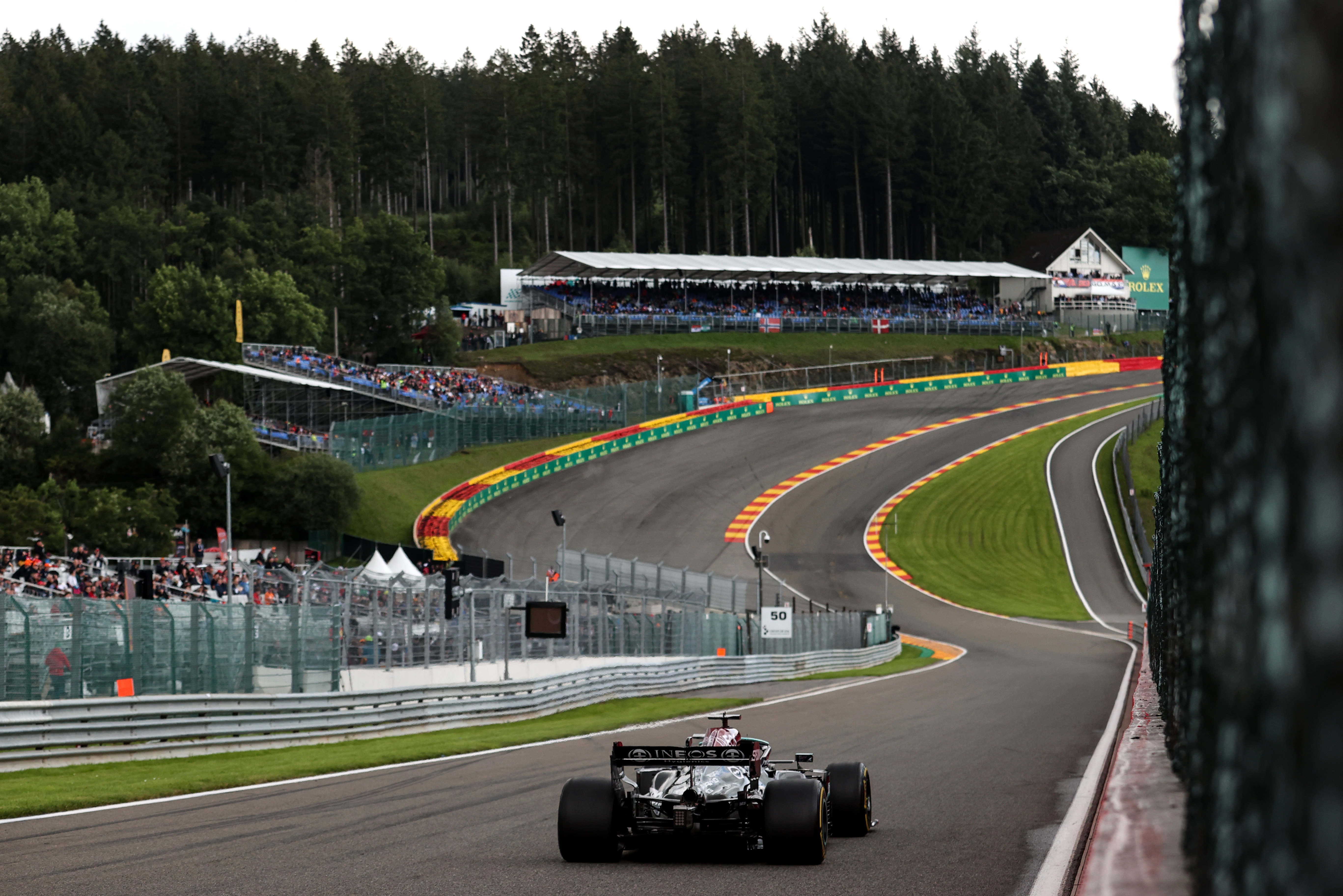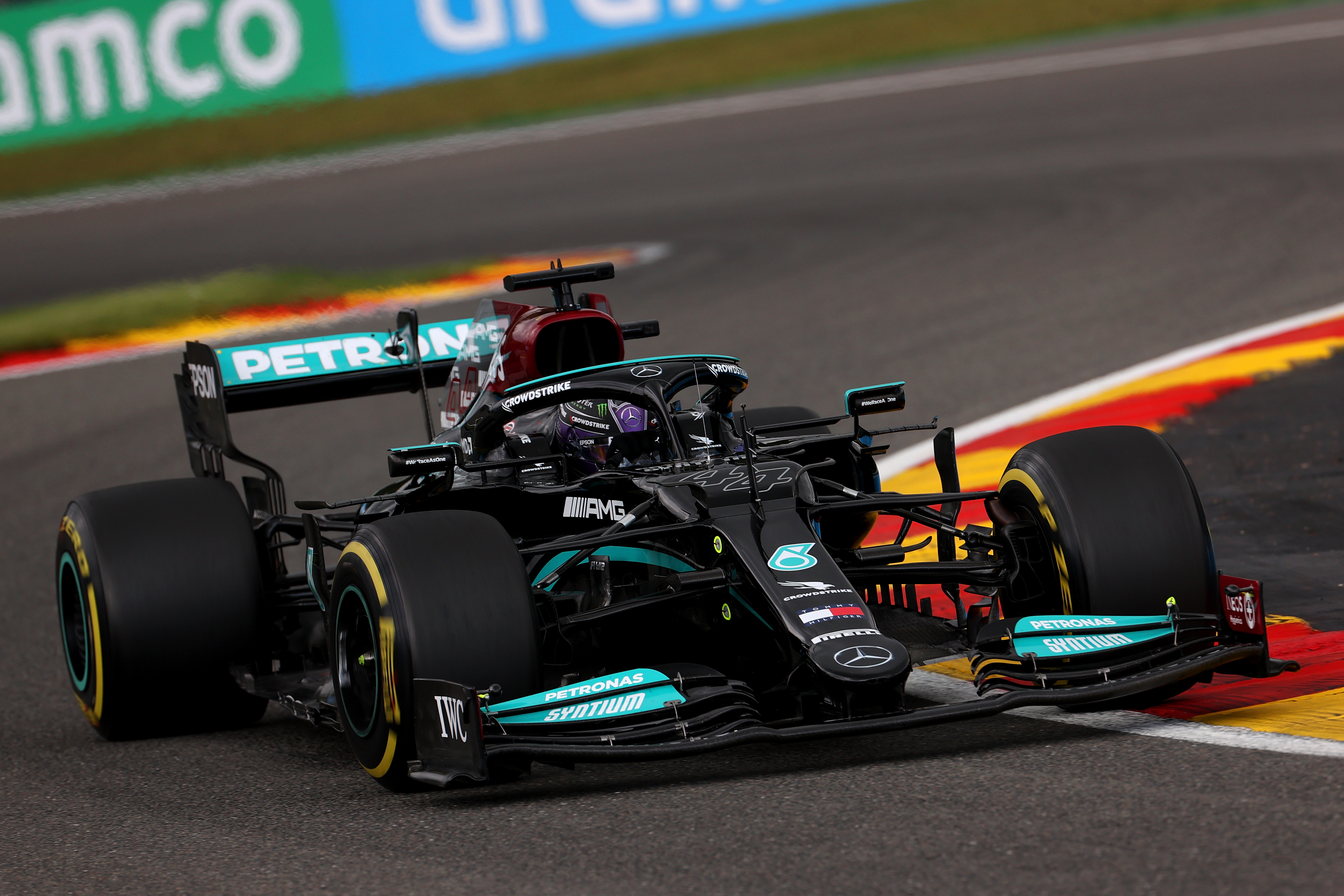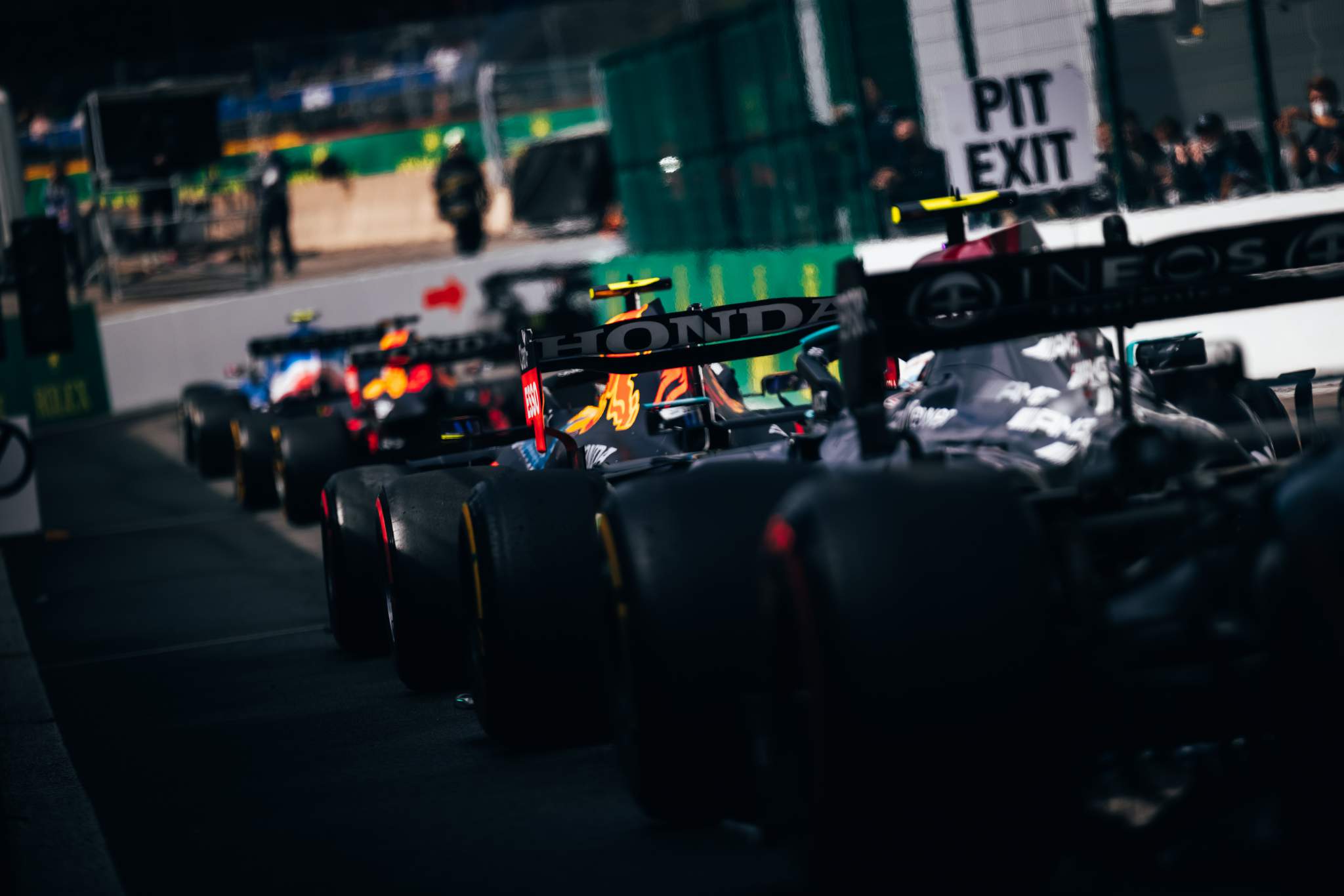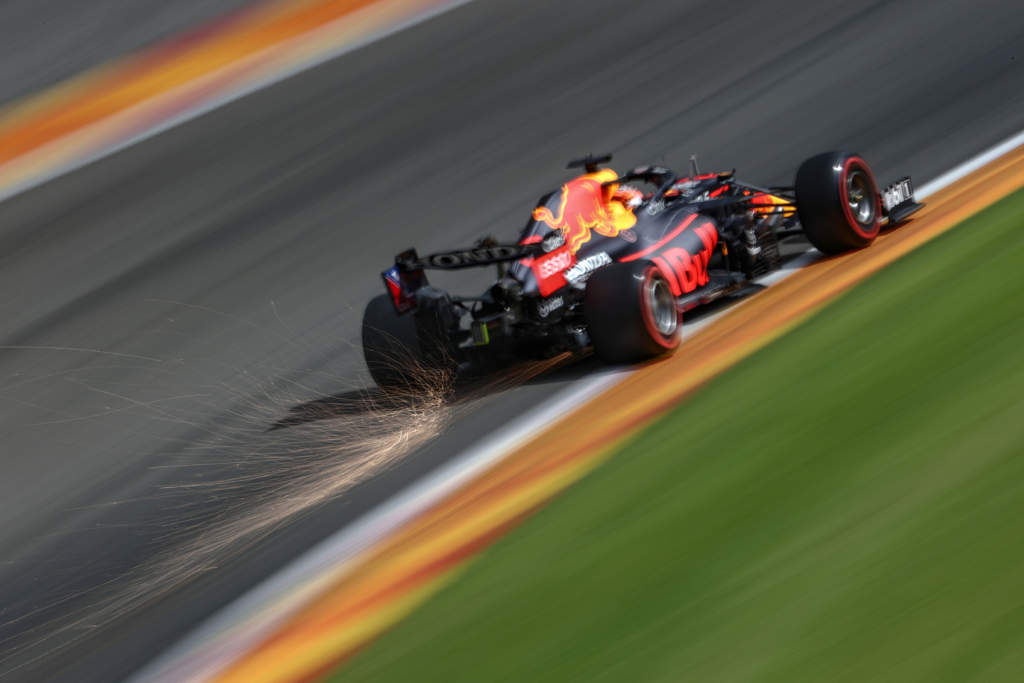Up Next

Max Verstappen’s crash at the end of the second practice session at the Belgian Grand Prix took the headlines after he reversed his Red Bull Formula 1 machine into the Malmedy barriers.
But hopefully, that will turn out to be a minor plot line in the story of this weekend. Given that this was only Friday, the gearbox change it might necessitate will not incur a penalty and hopefully, it’s a straightforward right-rear corner repair with no further complications.
It was just a standard cool, damp Spa sort of incident, rather like that of Charles Leclerc a few minutes previously, where the Ferrari’s front-left was plucked off as he got into a tank slapper on the exit of Les Combes. In Verstappen’s case, the session was almost at a close
anyway, so he lost little valuable track time and he did, in fact, head that session’s times.
But what the two red flags meant was no significant long-running for anyone. They were delayed by Leclerc’s accident and truncated by Verstappen’s.

Valtteri Bottas was two laps into his run, while his Mercedes team-mate Lewis Hamilton didn’t get to complete his second lap. Verstappen was part-way through his third when he crashed.
So, no long-runs to analyse.
Of more intrigue are downforce levels, especially with the widely-forecast heavy rain for Sunday. Spa’s layout always presents a tricky choice of wing levels, but that becomes even more so when rain is factored in. Obviously, more downforce is good if the track is wet. So the choice
between the two different wing levels most teams have here should be straightforward?
No, actually. As Lewis Hamilton put it: “Trying to find that balance here is massively challenging. This morning we tried one way, this afternoon the other and the lap times were very similar – either quick in the middle and slow in the other two sectors, or the other way around… if it’s guaranteed to rain you want more downforce.
“But if it doesn’t rain then you’re a sitting duck on the straights. So we have to be very, very careful and cautious in the choices we make. But this ain’t our first rodeo.”
At this point, the forecast says sporadic rain on Saturday and heavy rain for Sunday. But Spa is a law unto itself with its own microclimate. Around Spa, the higher downforce option tends to be slightly faster over a lap. But less raceable, and often inducing more heat degradation for the tyres.

Based on the patterns we’ve seen elsewhere this season, the Mercedes seems to gain more straightline performance than the Red Bull when wing levels are backed off. But the Red Bull seems to lose less lap time.
The Red Bull shows less variance than the Mercedes between different wing levels, both in terms of lap time and straightline speed. This is almost certainly a function of its high-rake concept which results in a greater proportion of the total downforce being derived from the underbody.
How does this impact upon the choices faced by each team this weekend?
The initial choices made by the two leading teams – with Red Bull favouring the higher downforce of its spoon profiled rear wing and Mercedes converging to the lower downforce of its two wings after back-to-backing them in FP1 – suggests Mercedes is hoping for a race run more in the dry than the wet and that Red Bull is just playing to its strengths, running its car in the most efficient part of its downforce range, knowing that will give it great flexibility wet or dry. But that will, as Hamilton suggests, potentially make it a sitting duck into Les Combes if it’s dry.
In terms of raw pace, the practices were not clear. Valtteri Bottas, using the low downforce setting and a powerful engine setting, was fastest in FP1 a couple of tenths ahead of Verstappen, but with Honda seeming to retain its standard PU settings throughout. Hamilton, using the Merc’s higher downforce setting and the same powerful PU setting as Bottas, looked set to eclipse them both but was forced almost onto the grass by an inattentive Nicholas Latifi and had to abandon the lap.

In the afternoon, with both Mercs using the lower downforce wing, they did their best times on the medium tyres when they were again running the higher engine mode. When they switched to the soft compound – which appeared on other cars to be around 0.7s faster than the medium – they were back on their lower PU settings.
This was reflected in their speeds through the speed trap at the end of the Kemmel Straight. When on the mediums Bottas and Hamilton went through at 330- 332kph. On their later soft runs they recorded only 326 and 327kph respectively.
For the purposes of comparison, the higher-downforce – and therefore draggier – car of Verstappen didn’t beat 321kph (with Sergio Perez on 322). That Red Bull downforce paid Verstappen back spectacularly in sector 2 and on the soft tyres he set the session’s best time 0.04s faster than Bottas’s medium tyred/high power time.
If we apply the soft-tyred delta of 0.7s to Bottas’ medium time, that would in theory make the Mercedes significantly faster. But with the proviso that we don’t know how Honda’s chosen engine setting compares with what Mercedes ran.
Nor do we know if the Mercedes can extract all the extra performance from the soft tyre – as quite often it cannot. Neither Hamilton nor Bottas were happy with the car’s balance on the softs. Put all those variables together, throw them up in the air and see who comes out on top! It’s far from clear. But as an educated guess, it would appear that the low-drag Mercedes is slightly faster in the dry around a track which rewards that quality.

Given that Red Bull cannot take off as much drag because of its car’s high-rake concept, it seems instead to be choosing to play to its high-downforce strengths and hoping that the rain will arrive to allow them to out-pace the Merc. For it may not fancy its chances of doing it any other way.
What is much clearer is that the Alpine, just like the Renaults of the previous two years, absolutely flies around Spa when its rear wing is trimmed out. Fernando Alonso set the fourth-fastest time, albeit a bare few hundredths faster than Pierre Gasly’s Alpha Tauri. Alpine will surely be hoping for a dry race.
In contrast, Ferrari is pinning its hopes on rain, if Friday running was any guide. It ran quite significant downforce and was quick in sector two as a result, though the car’s balance wasn’t great, leaving Carlos Sainz only 11th behind both Aston Martins, Ocon’s Alpine and Lando Norris’ McLaren – and with Leclerc in the barriers.
McLaren invariably shows a big jump into qualifying thanks to its car’s powerful DRS effect so Norris’ ninth-fastest time would typically translate into an improvement that would take it to the front of the queue behind Mercedes and Red Bull. But if it rains its less than optimal wing performance in non-DRS running may make the Ferrari and AlphaTauri very tough for McLaren to handle.
Aston Martin’s better-than-usual showing (Lance Stroll and Sebastian Vettel were a respective sixth and eighth fastest) is probably a reflection of the Mercedes-related low-rake/low-drag concept suiting the circuit.
Practice 2 Results
| Pos | Name | Car | Best Time | Gap Leader |
|---|---|---|---|---|
| 1 | Max Verstappen | Red Bull-Honda | 1m44.472s | |
| 2 | Valtteri Bottas | Mercedes | 1m44.513s | +0.041s |
| 3 | Lewis Hamilton | Mercedes | 1m44.544s | +0.072s |
| 4 | Fernando Alonso | Alpine-Renault | 1m44.953s | +0.481s |
| 5 | Pierre Gasly | AlphaTauri-Honda | 1m44.965s | +0.493s |
| 6 | Lance Stroll | Aston Martin-Mercedes | 1m45.18s | +0.708s |
| 7 | Esteban Ocon | Alpine-Renault | 1m45.302s | +0.83s |
| 8 | Sebastian Vettel | Aston Martin-Mercedes | 1m45.336s | +0.864s |
| 9 | Lando Norris | McLaren-Mercedes | 1m45.386s | +0.914s |
| 10 | Sergio Pérez | Red Bull-Honda | 1m45.404s | +0.932s |
| 11 | Carlos Sainz | Ferrari | 1m45.517s | +1.045s |
| 12 | Yuki Tsunoda | AlphaTauri-Honda | 1m45.758s | +1.286s |
| 13 | Antonio Giovinazzi | Alfa Romeo-Ferrari | 1m45.789s | +1.317s |
| 14 | Kimi Räikkönen | Alfa Romeo-Ferrari | 1m45.967s | +1.495s |
| 15 | Daniel Ricciardo | McLaren-Mercedes | 1m46.118s | +1.646s |
| 16 | Nicholas Latifi | Williams-Mercedes | 1m46.198s | +1.726s |
| 17 | George Russell | Williams-Mercedes | 1m46.665s | +2.193s |
| 18 | Charles Leclerc | Ferrari | 1m46.836s | +2.364s |
| 19 | Nikita Mazepin | Haas-Ferrari | 1m47.335s | +2.863s |
| 20 | Mick Schumacher | Haas-Ferrari | 1m47.529s | +3.057s |







